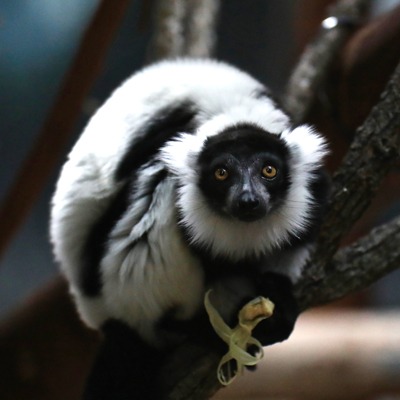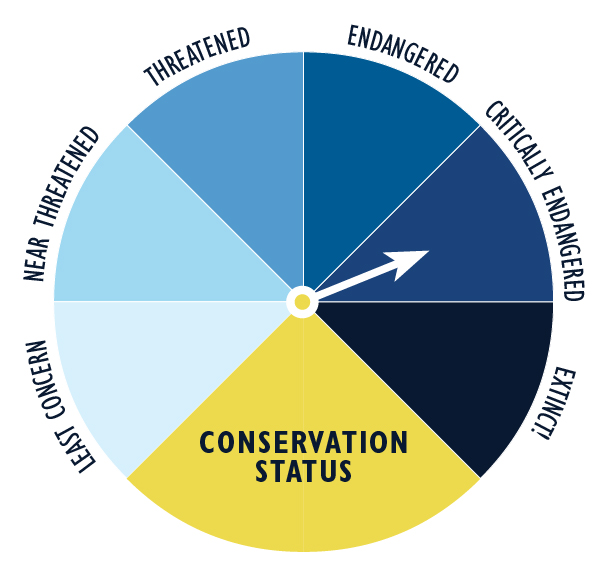
About Black and White Ruffed Lemur
The highly active black and white ruffed lemur has famously long, soft fur that varies in color and pattern. These lemurs are often considered the most beautiful species in its family.
Habitat
Black and white ruffed lemurs are tree dwellers found in the wet evergreen forest on the eastern coast of Madagascar. They travel through the forest by walking or running on large branches and leaping from tree to tree. They can leap significant distances with great accuracy.
Diet
This species feeds mostly on fruit, but will also feed on leaves, seeds, and nectar depending on the season. They have also been known to eat soil if necessary.
Family Life
These animals are usually found in family groups that are centered around a single mated pair. While they are capable of having up to six offspring from a single pregnancy, lemurs typically have two to three offspring at one time.
Conservation Status
The conservation status of the Black and White Ruffed Lemur is classified as critically endangered.
Threats
- Some of their greatest threats are caused by habitat loss due to slash-and-burn agriculture, logging, and mining.
- These large animals are most active during the day, making them attractive targets for hunting. They are the most heavily hunted species of lemur.
Facts about Black and White Ruffed Lemur
Class:
Mammalia (mammals)Order:
Primates (primates)Family:
Lemuridae (true lemurs)Genus:
Varecia (ruffed lemur)Species:
Varecia variegata (black and white ruffed lemur)Life Span:
19 years (wild) / 32 years (zoo)Size:
1.6 – 1.8 feet (50 – 55 cm)Weight:
6.6 – 9.9 pounds (3 – 4.5 kg)Tail Length:
1.6 – 2.1 feet (50 – 65 cm)
Fun Facts
- Females pull out their own hair to line the nests they build for their newborns.
- To reach ripe fruit hanging from tree branches, a lemur will suspend itself by its feet.
- These lemurs are most active in the morning and late afternoon.
- Along with vocalizations, these animals use body postures and facial expressions to communicate.